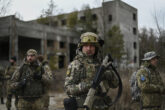March 07, 2022
Pentagon needs a six-pillar foundation
The defense budgeting system is more reflective of Soviet-era bureaucratic structures than the vibrant U.S. capitalist model. As illuminated in multiple studies and papers, this antiquated budget system has produced a Joint Force that is rapidly losing its military advantage to advanced peer rivals like China and Russia. More specifically, the current Planning, Programming, Budgeting, and Execution (PPBE) system isn’t timely, strategically aligned, responsive, or transparent.
Currently, it takes up to three years for DOD to generate the annual defense budget and for Congress to review and appropriate funding. This prevents DOD from focusing investments on new priorities, countering emerging threats, or taking advantage of innovative technologies.
The current PPBE system attempts to reconcile Combatant Command “fight tonight” needs with strategic, longer-term investments — but more often fails at both.
Defense budgets are often misaligned with strategy, with readiness and capacity being prioritized over much needed modernization.
The system constrains DOD’s ability to maximize resources and prevent the “valley of death” syndrome by requiring baselined acquisition programs, over-prescribing discrete efforts, using regimented research budget activities, employing multiple appropriations, and applying numerous procurement restrictions.
And finally, it incentivizes budgetary processes that are overly opaque, such as unnecessarily classifying information necessary for decision-making. And DOD communicates with Congress using heavily scripted testimony, responses, and briefings — often to the great frustration of congressional staffs.
Read the full article from The Hill.
More from CNAS
-
Defense / Transatlantic Security
When Defense Becomes Destruction: Austria-Hungary’s Mistake and Ukraine’s RiskThis article was originally posted on War on the Rocks. The southeastern Polish city of Przemyśl, with its elegant 19th century Habsburg-era train station, remains one of the ...
By Franz-Stefan Gady
-
Defense / Transatlantic Security
Ukraine’s Catch-22 MomentThis article was originally published in the Financial Times. In Joseph Heller’s wartime classic, Catch-22, the protagonist Yossarian seeks out the US army surgeon Doc Daneeka...
By Franz-Stefan Gady
-
CNAS Insights | Budgetary Own Goals Undermine “Speed and Volume”
On November 7, Secretary of Defense Pete Hegseth laid out a plan to overhaul the Department of Defense’s (DOD’s) acquisition system. Placing an emphasis on delivering new capa...
By Philip Sheers, Carlton Haelig & Stacie Pettyjohn
-
Drones: Who Is Making the New Weapons of War?
From Ukraine and Russia to Gaza and Sudan, drones have become a key weapon of war. Which companies are making them, and profiting from this rapidly expanding but controversial...
By Stacie Pettyjohn




